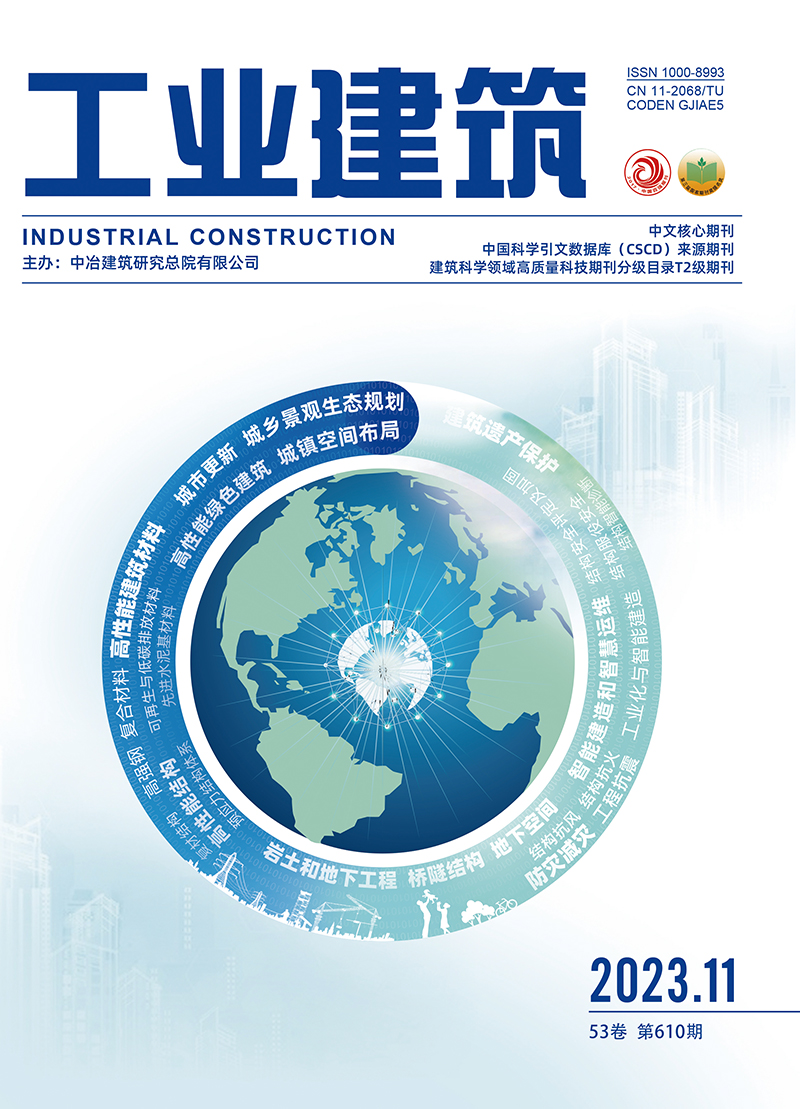| [1] |
AFLAKI A, MIRNEZHAD M, GHAFFARIANHOSEINI A, et al. Urban heat island mitigation strategies:a state-of-the-art review on Kuala Lumpur, Singapore and Hong Kong[J]. Cities, 2017, 62:131-145.
|
| [2] |
COMA J, PÉREZ G, DE GRACIA A, et al. Vertical greenery systems for energy savings in buildings:a comparative study between green walls and green facades[J]. Building and Environment, 2017, 111:228-237.
|
| [3] |
梁丽莎.广州地区攀援垂直绿化降温及节能效益研究[D].广州:华南理工大学,2019.
|
| [4] |
JIM C. Thermal performance of climber green walls:effects of solar irradiance and orientation[J]. Apply Energy, 2015, 154:631-643.
|
| [5] |
PERINI K, ROSASCO P. Cost-benefit analysis for green façades and living wall systems[J]. Building and Environment, 2013, 70:110-121.
|
| [6] |
KOYAMA T, YOSHINAGA M, MAEDA K, et al. Transpiration cooling effect of climber greenwall with an air gap on indoor thermal environment[J]. Ecological Engineering, 2015, 83:343-353.
|
| [7] |
LIU H, KONG F, YIN H, et al. Impacts of green roofs on water, temperature, and air quality:a bibliometric review[J/OL]. Building and Environment, 2021, 196[2022-05-24]. https://doi.org/10.1016/j.buildenv.2021.107794.
|
| [8] |
PERINI K, OTTELÉ M, FRAAIJ A, et al. Vertical greening systems and the effect on air flow and temperature on the building envelope[J]. Building and Environment, 2011, 46:2287-2294.
|
| [9] |
LIN H, MUSSO F, XIAO Y. Shading effect and heat reflection of the green facade:measurements of an external corridor building in Munich, Germany[C]//Proceedings of the 34th International Conference on Passive and Low Energy Architecture. 2018:931-933.
|
| [10] |
WONG N, KWANG T, CHEN Y, et al. Thermal evaluation of vertical greenery systems for building walls[J]. Building and Environment, 2010, 45:663-672.
|
| [11] |
殷实,WERNER LANG,肖毅强.湿热地区传统骑楼街区夏季热环境研究[J].南方建筑,2019(4):53-59.
|
| [12] |
肖毅强.亚热带绿色建筑气候适应性设计的关键问题思考[J].世界建筑,2016(6):34-37,127.
|
| [13] |
杨昶.南方地区玻璃采光顶喷淋降温系统设计研究[D].广州:华南理工大学,2019.
|
| [14] |
孟晓静,姚若昕,刘启薇.喷雾送风系统对热环境及人体热反应影响研究[J].安全与环境学报,2023,23(3):819-825.
|
| [15] |
殷忠路.雨水花园的降温效应及其机制研究[D].南京:东南大学,2021.
|
| [16] |
CHUN C, KWOK A, TAMURA A. Thermal comfort in transitional spaces-basic concepts:literature review and trial measurement[J]. Building and Environment, 2004, 39:1187-1192.
|
| [17] |
HAYDER A, MARIA H, REBECCA H, et al. The potential of facade greening in mitigating the effects of heatwaves in Central European cities[J/OL]. Building and Environment, 2022, 216[2022-05-24]. https://doi.org/10.1016/j.buildenv.2022.109021.
|
| [18] |
KOKOGIANNAKIS G, DARKWA J, BADEKA S, et al. Experimental comparison of green facades with outdoor test cells during a hot humid season[J]. Energy and Buildings, 2019, 185:196-209.
|
| [19] |
GROMKE C, BLOCKEN B, JANSSEN W, et al. CFD analysis of transpirational cooling by vegetation:case study for specific meteorological conditions during a heat wave in Arnhem, Netherlands[J]. Building and Environment, 2015, 83:11-26.
|
| [20] |
PÉREZ G, COMA J, SOL S, et al. Green facade for energy savings in buildings:the influence of leaf area index and facade orientation on the shadow effect[J]. Applied Energy, 2017, 187:424-437.
|
| [21] |
SHASHUA L, PEARLMUTTER D, ERELL E. The cooling efficiency of urban landscape strategies in a hot dry climate[J]. Landscape and Urban Planning, 2009, 92(3):179-186.
|
| [22] |
International Organization for Standardization, International Electrotechnical Commission. Ergonomics of the thermal environ-ment:instruments for measuring physical quantities[S]. Genève, Switzerland:International Organization for Standar-dization, 1998.
|
| [23] |
HÖPPE P. The physiological equivalent temperature:a universal index for the biometeorological assessment of the thermal environment[J]. International Journal of Biometeorology, 1999, 43(2):71-75.
|
| [24] |
MATZARAKIS A, RUTZ F, MAYER H. Modelling radiation fluxes in simple and complex environments:application of the RayMan model[J]. International Journal of Biometeorology, 2007, 51(4):323-334.
|
| [25] |
徐晓燕,沈雅雅.高层住区底层架空空间布局与实际使用效果的实证研究[J].华中建筑,2019,37(1):49-53.
|
| [26] |
赵丽艳.被动式设计视角下炎热地区公共建筑灰空间形态设计研究[D].泉州:华侨大学,2018.
|
| [27] |
RICHARDS P, HOXEY R. Appropriate boundary conditions for computational wind engineering models using the K-ε turbulence model[J]. Journal of Wind Engineering and Industrial Aerodynamics, 1993, 93(46/47):145-153.
|
| [28] |
TOMINAGA Y, MOCHIDA A, YOSHIE R, et al. AIJ guidelines for practical applications of CFD to pedestrian wind environment around buildings[J]. Journal of Wind Engineering and Industrial Aerodynamics, 2008, 96(10/11):1749-1761.
|
| [29] |
ŠUKLJE T, MEDVED S, ARKAR C. On detailed thermal response modeling of vertical greenery systems as cooling measure for buildings and cities in summer conditions[J]. Energy, 2016, 115:1055-1068.
|
| [30] |
SANZ C. A note on k-ε modelling of vegetation canopy air-flows[J]. Boundary-Layer Meteorology, 2003, 108:191-192.
|
| [31] |
SHIH T, LIOU W, SHABBIR A, et al. A new K-ε eddy viscosity model for high reynolds number turbulent flows[J]. Computers&Fluids, 1995, 24:227-238.
|
| [32] |
FIDAROS D, BAXEVANOU C, BARTZANAS T, et al. Numerical simulation of thermal behavior of a ventilated arc greenhouse during a solar day[J]. Renewable Energy, 2010, 35:1380-1386.
|
| [33] |
ZHENG S, ZHAO L, LI Q. Numerical simulation of the impact of different vegetation species on the outdoor thermal environment[J]. Urban Forestry&Urban Greening, 2016, 18:138-150.
|


 Login
Login Register
Register E-alert
E-alert







 DownLoad:
DownLoad: